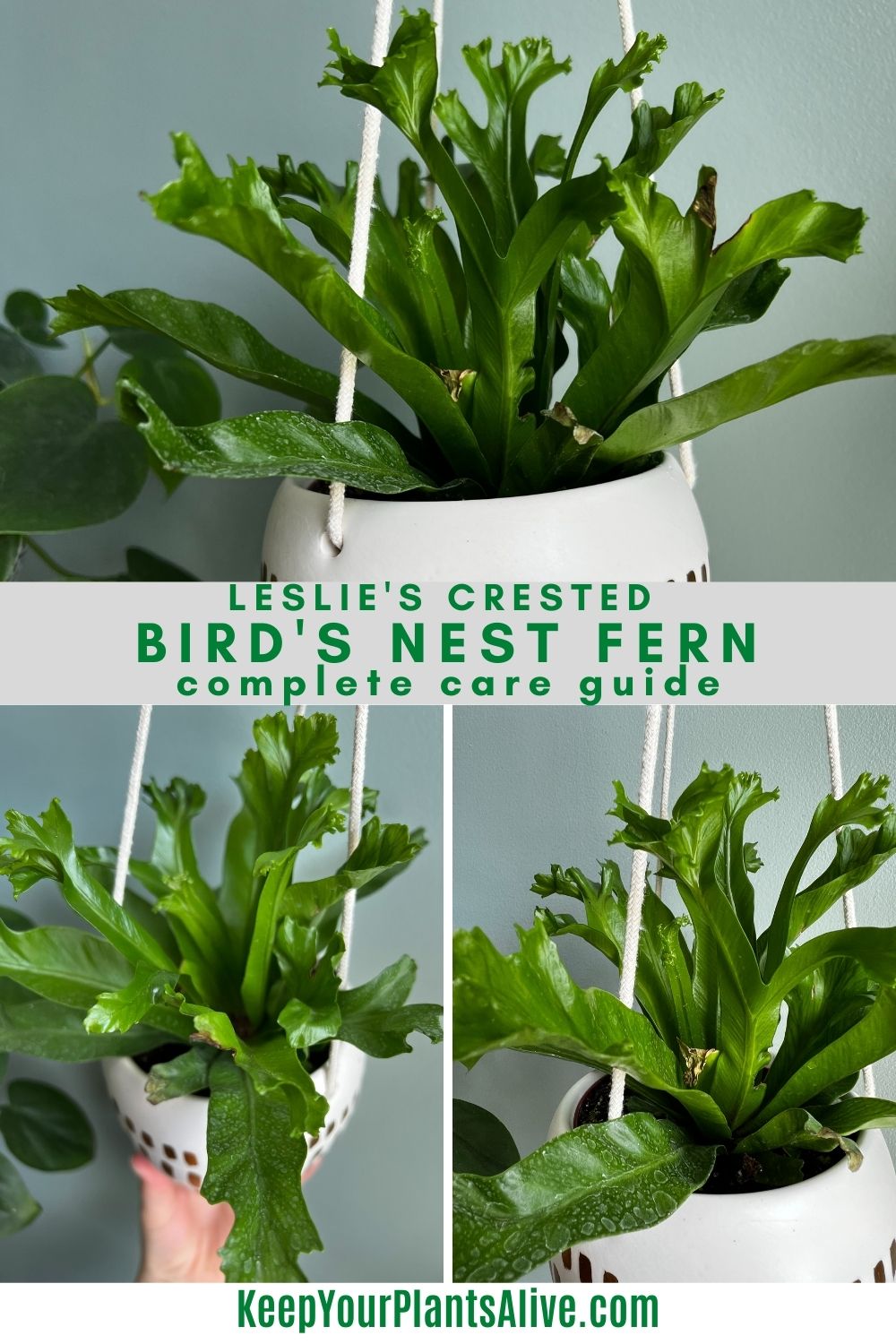Wondering why your birds nest fern have yellow leaves? Here are the top causes and how to prevent and fix yellow leaves on a birds nest fern!
Birds Nest ferns are a super popular, easy to care for houseplant.
I love them because they do well even without a ton of light and have a unique shape and style to their leaves.
While these plants are easy to care for, they can still have some issues.
One of the most common issues with a Bird's Next Fern is yellow leaves.
Today I want to talk about the causes and remedies for yellowing leaves and how to prevent them on your birds nest fern!
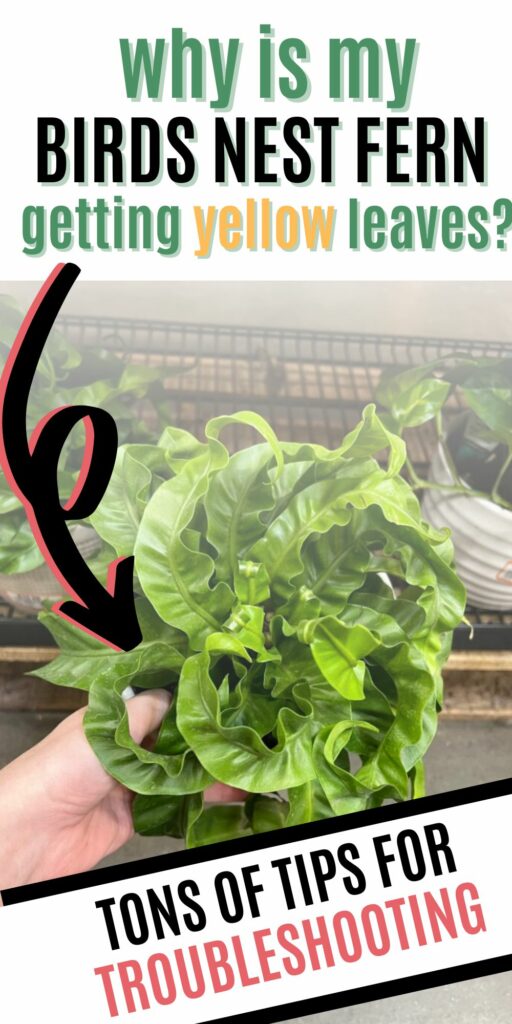
All About Bird's Nest Fern
The Bird's Nest Fern (Asplenium nidus) is a beautiful fern that is commonly grown indoors as a houseplant.
They have a really unique look with rosette-shaped fronds growing out from a center point.
Two popular types of birds nest ferns are the Leslie's Crested and the Hurricane Fern.
These are generally low-maintenance plants, though they do like to stay slightly wet and don't need too much light to grow!
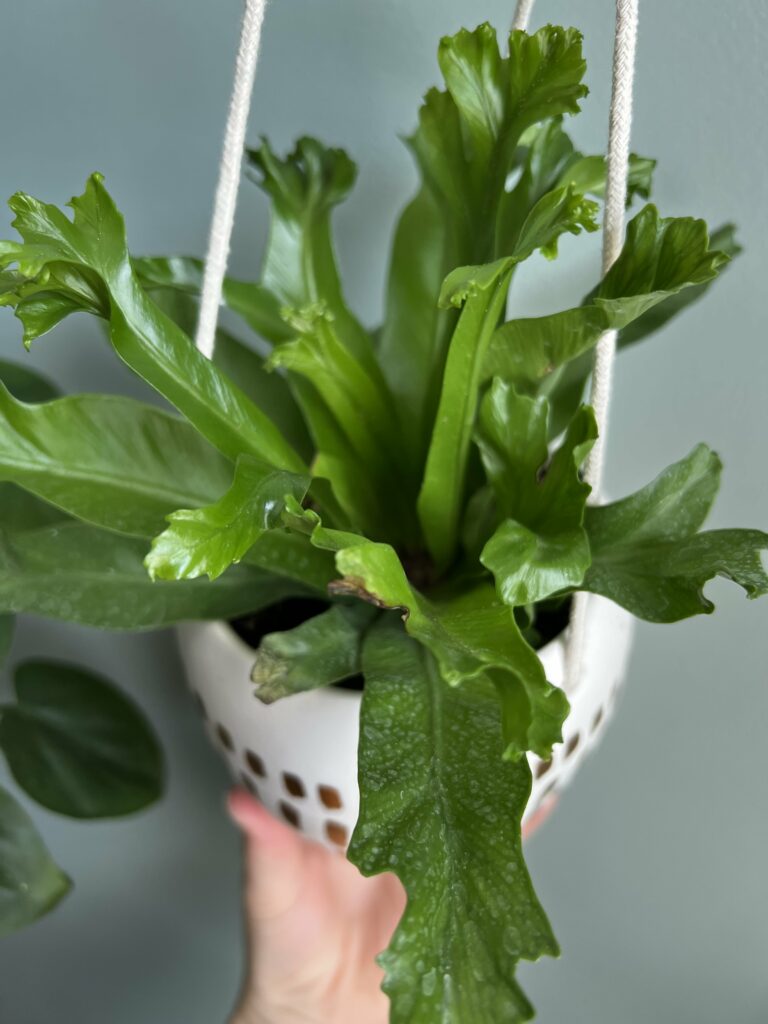
Causes of Yellow Leaves on birds nest fern
There are various factors that can lead to yellow leaves in Bird's Nest Ferns, such as:
Light Issues
Inadequate or excessive light can cause yellowing. Is the plant reaching or leaning towards the light? Move it to a sunnier spot.
If it is getting brown crispy spots, that might be sunburn! Move it out of the sun.
Watering Problems
Overwatering or under watering affects the plant.
An underwatered plant will look limp, with dry compact soil.
An over watered plant will be soggy, mushy, with wet soil that might have an odor or mushrooms growing on it.
Nutrient Deficiency
A lack of fertilization and nutrients in general can lead to yellow leaves.
If the plant has not been fertilized in a year, apply a houseplant fertilizer. Do not over fertilize, which can cause yellow leaves, too.
Pests and Diseases
Common pests and diseases that can affect Bird's Nest Ferns include scale and spider mites.
Check the underside of the leaves for signs of pests or webbing. Wipe clean with soapy water.
Age
As fronds age, they naturally turn yellow and die off. This is normal and should happen to the oldest, outer leaves.
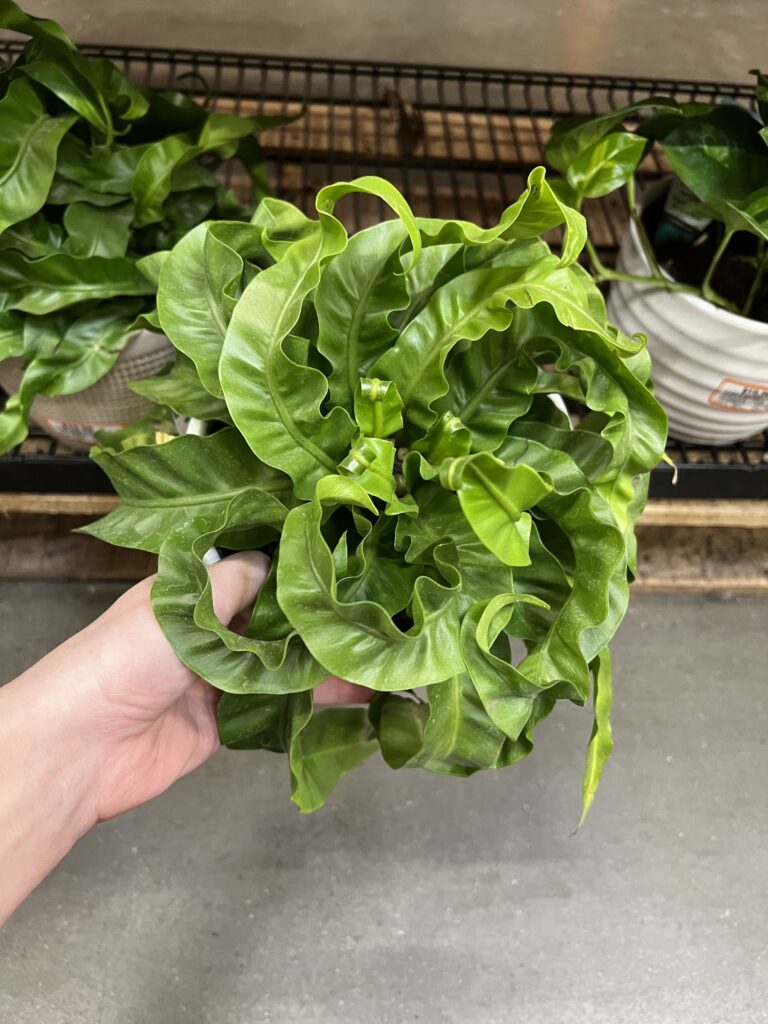
What to Do Once your Birds Nest Fern gets Yellow Leaves
Once your plant gets yellow leaves, the most important thing is to determine why it is upset and try to change the conditions to be more favorable.
For example, if it is getting over watered, water it less. If it needs fertilization, fertilize it.
Of course, determining the exact problem is half the battle.
Pruning
Yellow fronds can either be removed or left to fall off naturally. I usually tug gently. If they pop off, they are trash. If not, let them sit a few days.
You can always use shears or clean scissors to cut off dead leaves. They will not turn green again.
Repotting
If your plant has outgrown its pot, the soil is very dry and compact, or the soil is soggy, you might just want to repot it.
Knock out all the soil and gently remove the plant. Put it in a new pot 1-2 inches wider in diameter. Add fresh soil.
Adjusting Care
Observe your plant and the current watering, lighting, and feeding practices. Adjust slightly to see if small changes help it perk up.
Pest and Disease Control
If you notice pests on your plant, separate it from any other plants as soon as possible. Wipe down the leaves with dish soap and water.
Since these plants have such textured leaves, I like to wash them in the shower.
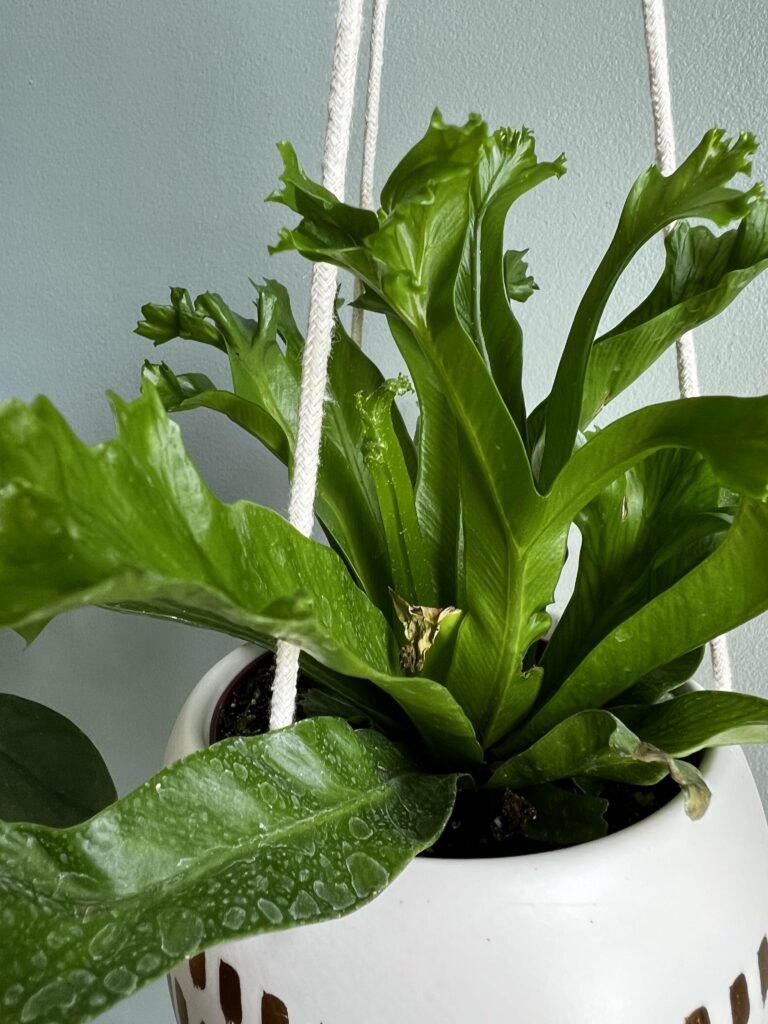
How to Prevent Yellow Leaves
Here are some proactive measures to keep Bird's Nest Ferns healthy and vibrant:
Proper Lighting
Your Bird's Nest Ferns will do best with bright, indirect light. If they don't get enough light, they will lean and stretch towards the light. Too much direct light will burn the leaves!
Watering Guidelines
Water when the top 2 inches of soil feel dry to the touch. Try not to get water in the center of the rosette, which can lead to rot.
These plants do really well being bottom watered.
Fertilizing
It is important to fertilize regularly but not too much. Apply a houseplant fertilizer once a month in the warm growing months.
Maintenance
Clean and inspect the plant regularly so you notice any changes and can react ASAP.
Humidity
It is important to maintain appropriate humidity levels for your plant. They can get dried out especially from heaters in the winter.
Run a humidifier, mist your plant, use a pebble tray, or cluster with other plants to increase humidity.
Yellow leaves are annoying, but don't mean your plant is about to die.
These tips should help you to ensure the health and beauty of your Bird's Nest Ferns.
Any more questions about the birds nest fern?
Thanks for reading!

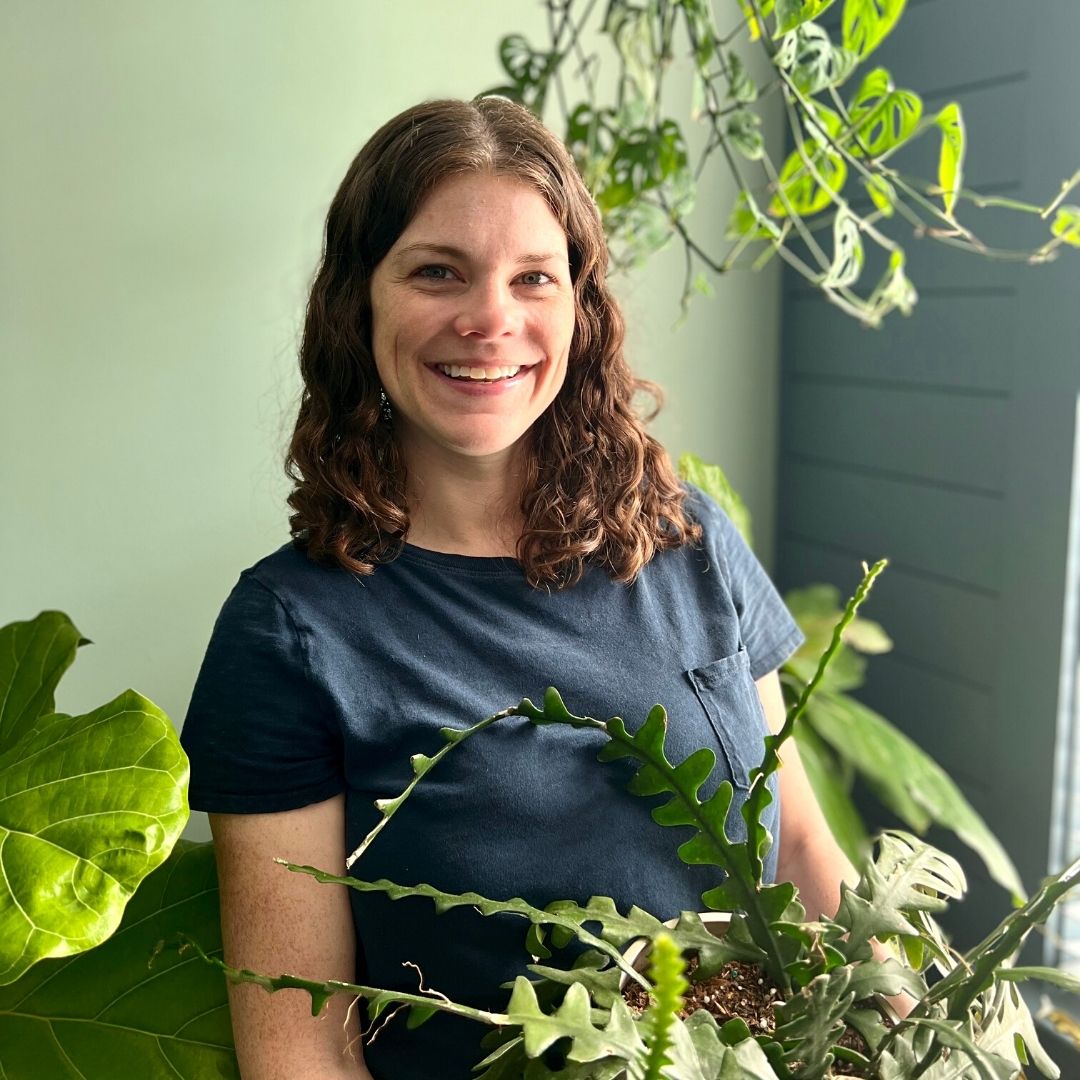
Hey there, I'm Morgan, a houseplant enthusiast from sunny Charleston, South Carolina. Growing up surrounded by my mom's lush orchids and African violets, I discovered the magic of bringing nature indoors. Thanks to the pandemic, I delved deeper into houseplants, discovering their power to uplift moods and transform spaces. I'm here to spill all my secrets, helping you pick the perfect houseplant - and make it happy. Let's keep your plants alive, together! 😊

